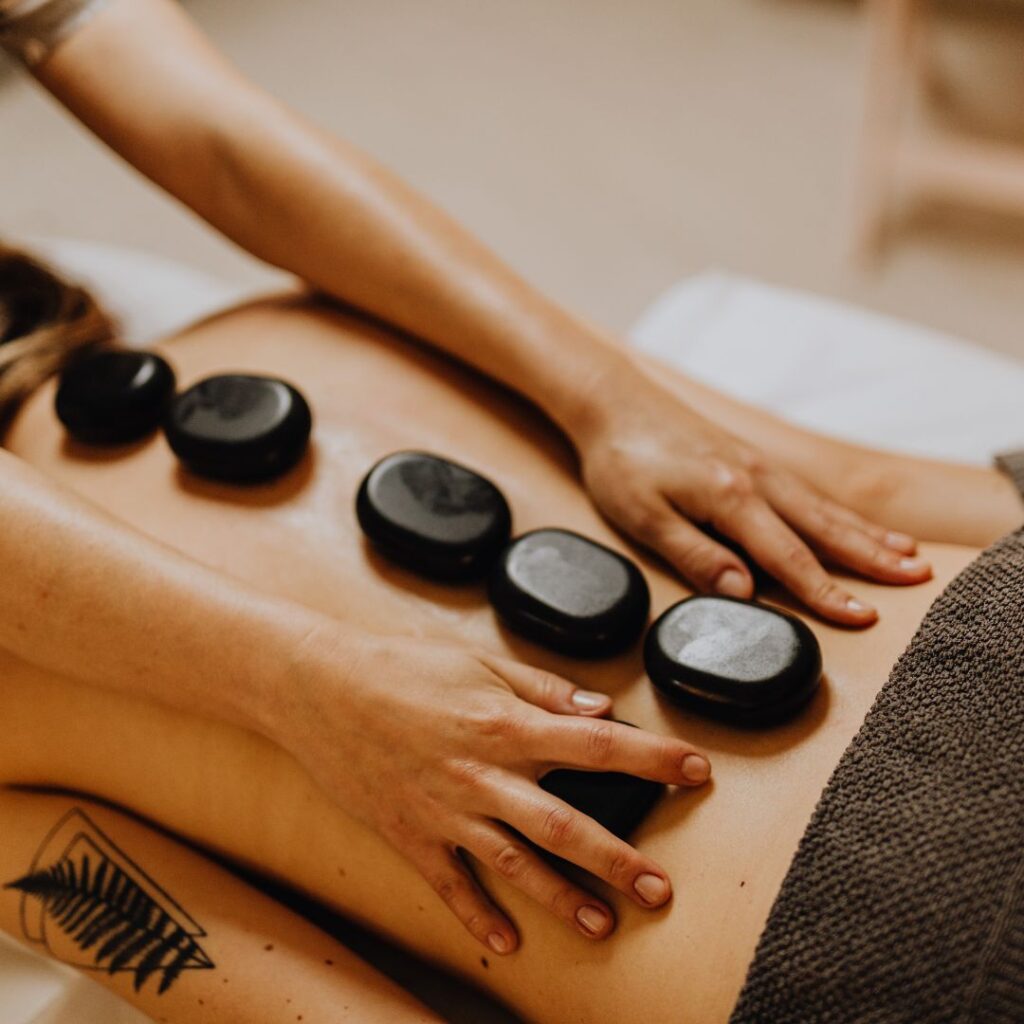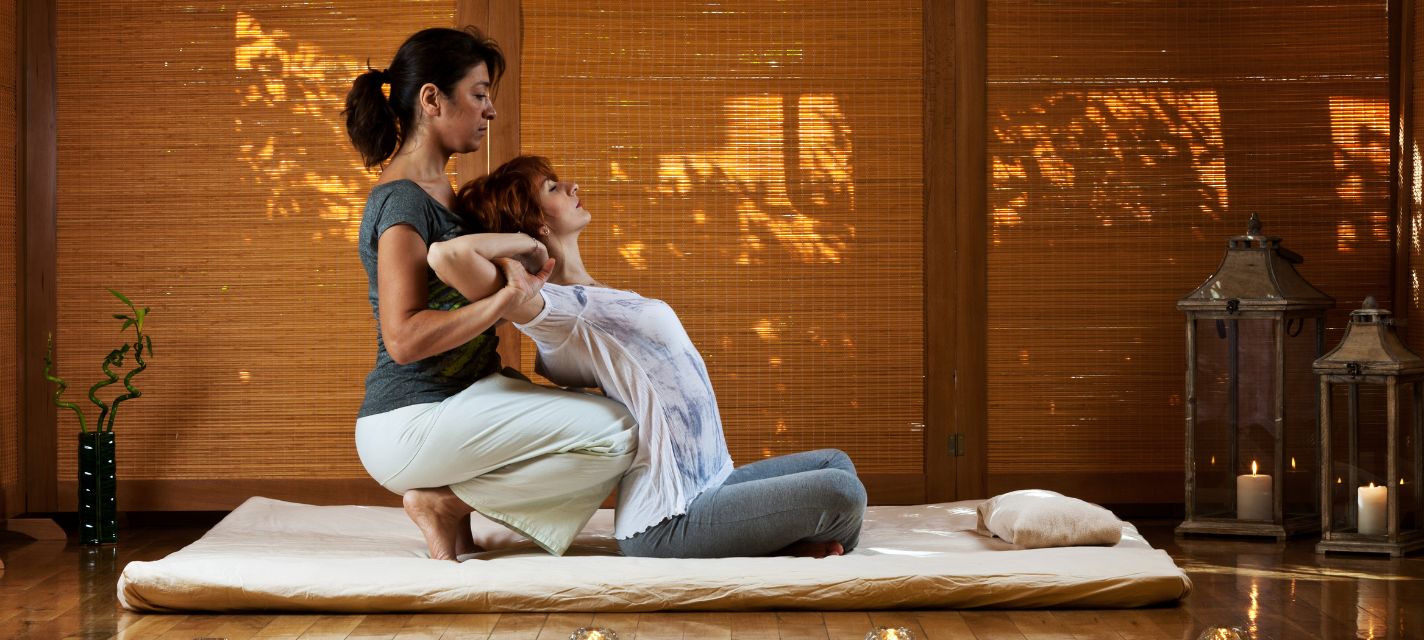Thai massage is a centuries-old healing practice that combines acupressure, yoga-like stretching, and rhythmic compression to promote relaxation, reduce muscle tension, and improve flexibility. Unlike Western massages, Thai massage is a more active experience for both the therapist and the recipient, involving deep stretches, pressure on specific points, and a focus on energy lines called “Sen.” While Thai massage is typically learned through hands-on practice with a skilled teacher, understanding the fundamentals can help you begin to master the art.
Here’s a beginner’s guide to help you get started with the basic techniques of Thai massage.
1. Understanding the Basics of Thai Massage
Before diving into the specific techniques, it’s important to understand the core principles behind Thai massage:
- Sen Lines: These are energy lines similar to meridians in acupuncture. Thai massage therapists focus on applying pressure along these lines to release blockages and balance the body’s energy.
- Breathing: In Thai massage, both the therapist and the recipient focus on deep breathing to enhance the relaxation response and improve the flow of energy.
- Stretching: Thai massage is known for its yoga-like stretches, which help to increase flexibility and release muscle tension.
- Acupressure: Like in Chinese medicine, applying pressure to specific points along the body helps relieve pain, improve circulation, and promote healing.

2. Key Techniques in Thai Massage
Here are some fundamental techniques to master as a beginner:
Acupressure
- Thumb Pressure: One of the most common techniques in Thai massage, thumb pressure involves using the therapist’s thumbs to apply firm, controlled pressure to specific points along the body’s Sen lines. Focus on areas where the muscles feel tight or tender, such as the shoulders, back, and neck.
- Palm Pressure: The palms are used to apply broader, deeper pressure, particularly on larger areas of the body, such as the lower back or thighs.
- Elbow Pressure: For deeper pressure, especially in areas of chronic tension, the therapist may use their elbows to press firmly into the muscles and stimulate blood flow.
Stretching
- Leg Stretches: Thai massage is known for its use of assisted stretching, which helps to improve flexibility and release tight muscles. One common stretch involves the therapist gently lifting the recipient’s leg and guiding it into a stretch to open the hips and lower back.
- Back Stretch: This is a popular stretch in which the therapist uses their hands to guide the client’s spine into a gentle stretch. It helps improve posture and alleviate back pain.
- Hip Openers: Assisted stretches that target the hip area help release tension in the hip flexors and lower back. One example is the “figure-four stretch,” where the therapist presses gently on the knee to stretch the hip.
Rhythmic Compression
This technique involves using the body’s weight to apply pressure in a slow, rhythmic manner. The therapist might walk along the recipient’s body, using their knees, feet, or palms to press down with a gentle rocking motion. This rhythmic pressure can be very relaxing and helps release deep-seated tension.
Gentle Manipulation
In addition to stretching and acupressure, Thai massage also involves joint manipulation. The therapist may use gentle movements to stretch and release tension in the joints, such as twisting the wrists or rotating the ankles.
3. The Importance of Body Alignment
Proper body alignment is crucial for both the therapist and the recipient to ensure the technique is effective and safe:
- Therapist Posture: The therapist should maintain good posture by using their body weight to apply pressure rather than relying solely on arm strength. This helps prevent fatigue and injury.
- Recipient Posture: The recipient should remain relaxed and allow their body to be guided by the therapist’s movements. Clear communication is key in letting the therapist know if a stretch or pressure is too intense.
4. Creating the Right Atmosphere
Thai massage is as much about the environment as it is about the technique. A serene atmosphere helps promote relaxation. Here are some tips for setting the stage:
- Lighting: Soft, natural lighting or dimmed lights can help create a calm, soothing atmosphere.
- Music: Gentle, calming music can help the recipient relax.
- Aromatherapy: Using essential oils, such as lavender or eucalyptus, can enhance the experience by calming the mind and body.
- Comfortable Setting: Typically, Thai massage is performed on a firm mat on the floor, allowing the therapist to move freely and use their body to support different techniques. Ensure the space is free from distractions and the temperature is comfortable.
5. Learning Through Practice
Thai massage is a skill that takes time to master, but practice is essential. Here are some tips for learning the art of Thai massage:
- Seek Professional Training: While watching videos and reading guides can be helpful, nothing beats hands-on training with a professional instructor. Enrolling in a Thai massage course will give you the foundation you need to develop your technique.
- Start Slow: Begin by practicing basic techniques such as acupressure and gentle stretches before advancing to more complex moves.
- Practice on Friends or Family: Start practicing on willing friends or family members to get a feel for the movements and develop your confidence.
- Listen to Your Recipient: Communication is essential. Ask for feedback on the pressure, intensity of the stretches, and overall comfort. Thai massage is about the recipient’s comfort and relaxation, so always adjust your technique as needed.

6. Health Benefits of Thai Massage
Thai massage offers a wide range of health benefits, including:
- Increased Flexibility: The stretching component helps improve muscle flexibility and joint mobility.
- Pain Relief: Thai massage can relieve chronic pain, especially in the back, shoulders, and neck.
- Improved Circulation: The pressure and stretching techniques promote better blood flow throughout the body.
- Stress Reduction: The practice of Thai massage helps reduce stress and anxiety by promoting relaxation and balancing energy.
- Detoxification: The techniques stimulate the lymphatic system, helping to detoxify the body and improve overall health.
Conclusion
Mastering Thai massage techniques takes dedication and practice, but it’s a rewarding journey that can bring both personal and professional satisfaction. Whether you’re practicing on yourself or learning to offer it to others, Thai massage is a deeply restorative practice that promotes relaxation, enhances flexibility, and improves overall well-being. With the right techniques, a mindful approach, and a bit of practice, you can begin to experience the powerful benefits of this ancient healing art.

